
 |
Farndon Buildings
In the 1970s, when I bought my first car, I wasted no time in driving out from Liverpool to rural Cheshire and Shropshire on a regular basis, to explore, to set off on walks, and to find undisturbed places to spend a few idyllic hours fishing. One of those places was in Farndon, a village I had regularly visited on day trips with my parents in the 1960s. I can vividly remember finding Townfield Lane, which appeared on the map to finish in a dead end at an ox-box curve in the River Dee. This looked perfect, and it didn’t disappoint after bouncing down the last few hundred yards on the rough track. I returned time and again to this peaceful stretch, ignoring the more easily accessible car park and fishing pegs next to the medieval bridge. And that has continued to this day. I moved to Farndon in 2005 and now live off Townfield Lane. The rods are tackled up in the garage, ready to be grabbed before the five minute stroll to the river at the bottom of the Lane. But I was also intrigued by the community of chalet dwellers that lined both sides of the river – both in England and Wales – and wondered how they came to be there and who owned them. Not long afterwards, I was flying over the Cheshire area with a good friend in a single engine light aircraft, carrying out an aerial archaeological study, when I immediately recognised the riverbanks where I had spent such long hours. The photograph I took from 1989 is below. 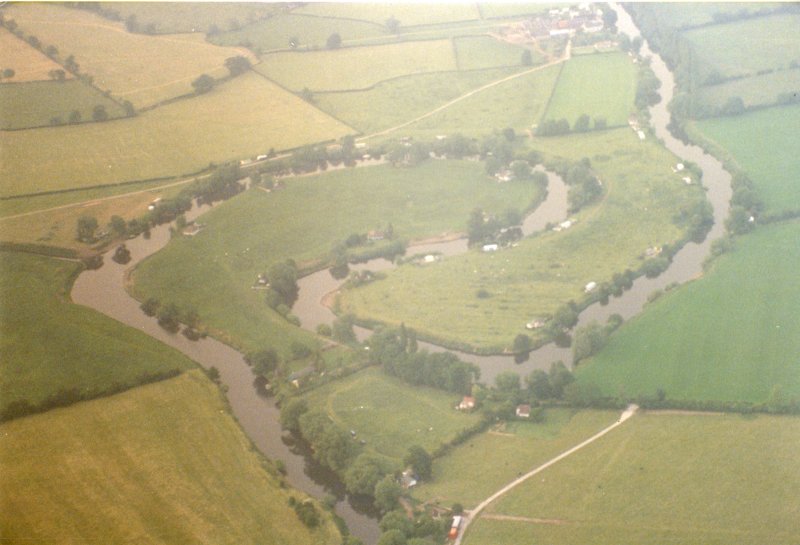 But what of this community of huts and chalets? Initially, the first thought was of some kind link to the Townfield. This was the large swathe of land dissected by the Churton Road running out of Farndon to Chester, medieval in origin, but gradually succumbing to the modernising Enclosure movement in the eighteenth century. Often integral to the medieval Townfield were the small plots of land at the end of cultivated fields or off roadsides, which were often declared as waste or common land, giving rising to squatters developing smallholdings, rearing chickens or a cow, cultivating vegetables or practicing small industries such as carpentry or brickmaking. This is very likely to have been the case further upstream from the bridge, where there were sandstone quarries, and a brick making field off Crewe Lane. Most of the Farndon chalets occupy the riverbank in the area known as Farndon Hey. This is a linear area of land at the bottom of the Townfield, a long water meadow, that in the early seventeenth century was part of one of the earliest horse racing courses in the country (covered here). The various enclosures from 1773 to 1882 in the UK seized control of common ‘waste’ land from subsistence peasant farmers. It is quite likely that there were early settlers with squatters’ rights occupying the riverbank, but the sites today are of 20th century origin, and appear to have originated mainly in the wake of the First World War, when the country faced an unprecedented demand for working class housing. Plotlanders Generally, when looking at the broader factors behind the development of plotlands their origins coincided with the general agricultural decline in which had witnessed an increase in momentum in the late nineteenth century. Coupled with this was the change brought to the working classes following the increasing development of the railway network into the latter half of the 1800s which brought more opportunities for holidays with cheap travel, especially as the five-day week became more prevalent and the growing concept of the ‘weekend’. Renting a small plotland dwelling was one of the more cheaper options, especially as these were the years before the Holidays With Pay Act of 1938. But paramount was the increasing idea of becoming an owner-occupier in a society that was largely a rental class dominated by landlords. According to Ward and Hardy, The word ‘plotlands’ is used by town planners as a shorthand description for those areas where, in the first forty years of this century, land was divided into small plots and sold, often in unorthodox ways, to people wanting to build their holiday home, country retreat or would be smallholding. Sometimes they simply squatted and eventually gained title through ‘adverse possession’, the legal phrase for squatter’s rights.
Original ownership of the riverside properties gives no hint as to overall policy behind the movement in Farndon. Of course, this would be much easier to grasp if large block sections were owned by the Westminster estate or Barnston. In fact, their nineteenth century ownership was restricted to just a couple of riverside plots in the Farndon area, with most just split amongst several individual owners. The 'plotlands' consisted of small plots of land sold in the first half of the 20th century to people who built weekend cottages, holiday bungalows, or smallholdings. Many of the people building weekend cottages in Farndon would have come out from the larger cities, especially Liverpool. The Royal Insurance company also owned a chalet for example, no doubt for rent or as a holiday perk for its Liverpool staff. With the outbreak of the Second World War, many weekenders moved out to their plots on a permanent basis, to escape the worst effects of the Blitz. After the war, the 1947 Town and Country Planning Act effectively stopped the emergence of further informal plotlander housing developments. However, the plotlands tended to be upgraded over time. Extensions, the addition of bathrooms, partial or even total rebuilding, the provision of mains services, and the making-up of roads are part of the continuous improvement process. Despite the constant threat of flooding, many of the riverside plot sites today have become highly desirable and are highly sought after.
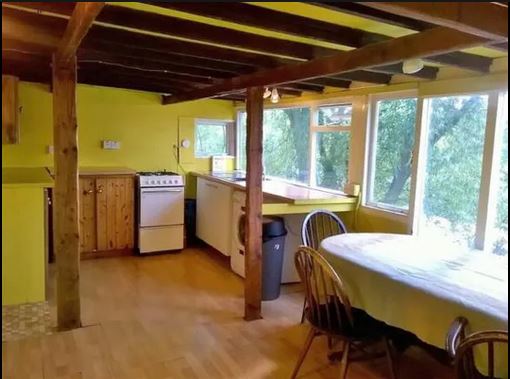
'Bronafon' built in the 1950s, on the market for £61000 in the 2020s 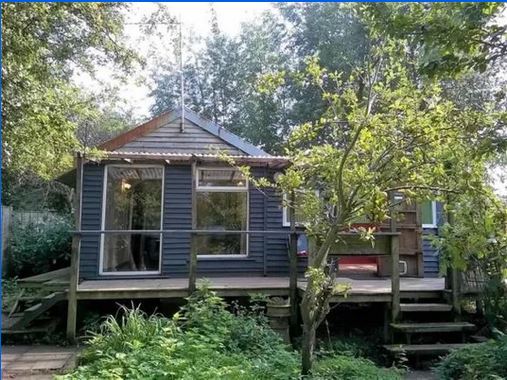
'Bronafon' interior 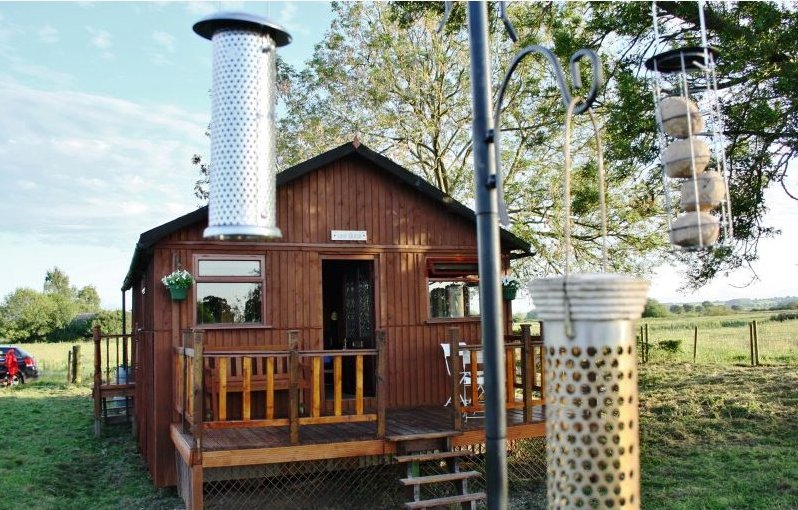
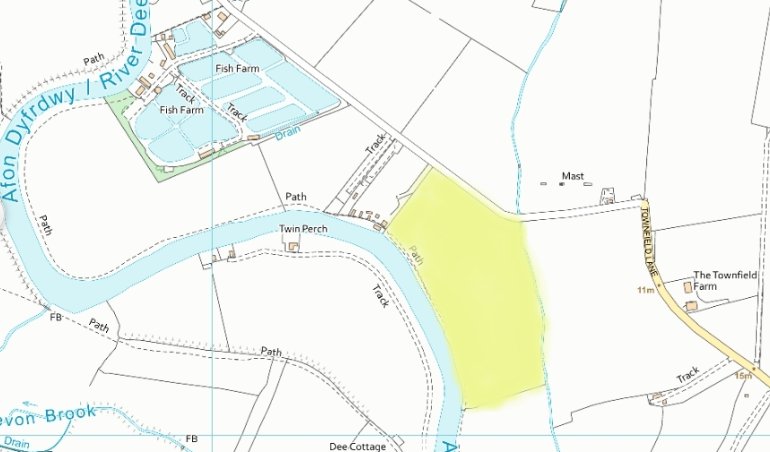
Barnston owned plot is highlighted. The rest of the riverside plots are individually owned by several landowners.
Westminster owned plot
Almere dwellings on the Welsh side of the Dee
Almere dwellings on the Welsh side of the Dee
Almere dwellings on the Welsh side of the Dee
Almere dwellings on the Welsh side of the Dee
Almere dwellings on the Welsh side of the Dee from a kayak on the river
Almere dwellings on the Welsh side of the Dee from a kayak on the river
Kayaking on the Dee through the Almere bow section
Farndon dwellings on the Westminster owned section
Farndon dwellings on the Westminster owned section
Farndon dwellings on the Westminster owned section
Farndon dwellings on the Westminster owned section
Farndon Plotlanders and the Floodplain
One major factor regarding the Farndon and Almere Plotlanders which did not tend to be an issue elsewhere, was that the plots in their bankside locations were at heart of the River Dee floodplain. The river usually floods in this lower-river section two to three times a year. Locals are well used to this, and it always raises a smile when TV news vans appear near the bridge intent on reporting the high levels as though they are an unusual occurrence. One exception to this however, was the January flood of 2021, which reached a level not seen since the early eighties, and resulted in the closure of the bridge, solely for safety concerns, something that had not happened for many years (there are closures of course, but they usually relate to maintenance and removal of flotsam).
River Dee at Farndon, showing riverside dwellings on both
Upper Dee stretch at Caldecott / Crewe Hill
River Dee flood plain
River Dee flood plain below crewe hall (Photo: Jason Hawkes)
Two aerial views of Farndon - normal Dee water levels and in flood
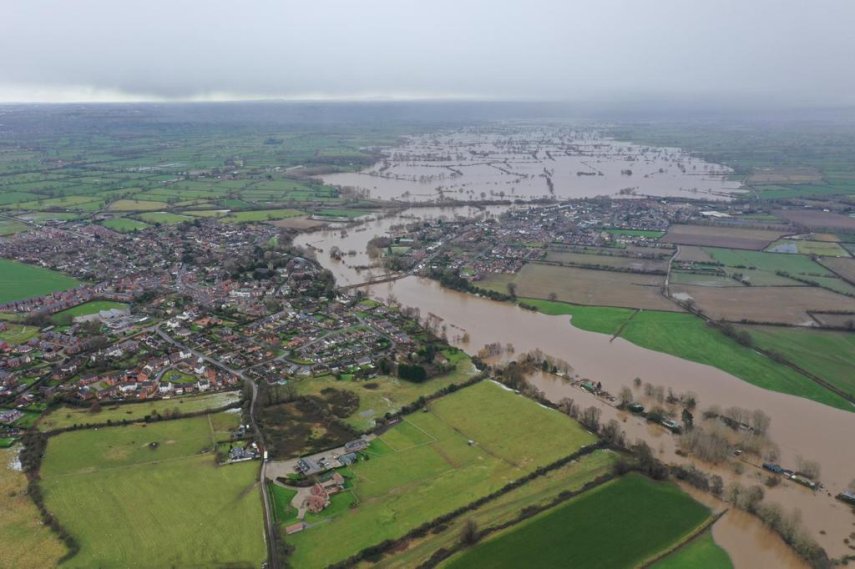
The flooded River Dee at Farndon, showing riverside dwellings bottom right
The double bow in the river at Almere showing the flooded riverside dwellings Helicopter rescue - Almere chalets residents rescued during storms of January 2021: Police get helping hand from Rossett farmer with flooding rescue Storm Christoph: Helicopter crew rescues family trapped by floods
Farndon Bridge at high flood water
Further reading
Online
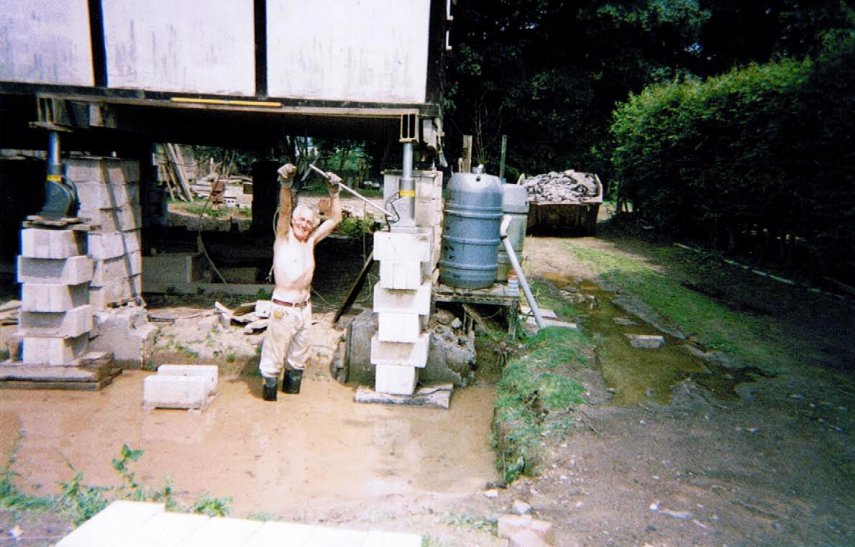
Peter Johnson at work to raise his property above the flood line
River Dee flood plain from Peter Johnson's home (photo: Peter Johnson)
River Dee flood plain from Peter Johnson's home (photo: Peter Johnson)
(Left:)Peter Johnson's retirement home (photo: Peter Johnson)
River Dee flood plain from Peter Johnson's home (photo: Peter Johnson) Ricky Tomlinson - Farndon plot owner
 Actor Ricky Tomlinson in front of his modern Farndon chalet retreat
|
Return to Village Buildings page
www.roydenhistory.co.uk
Visit the Royden History Index Page listing web sites designed and maintained by Mike Royden
No pages may be reproduced without permission
copyright Mike Royden
All rights reserved